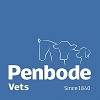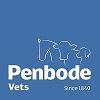Lambing
Preparing for lambing, lambing diseases, care of the lamb
Lambing season is one of the busiest times of year for any sheep farmer, and it can quickly become overwhelming and tiring.
Good preparation and planning will help to manage it successfully.
Preparing for lambing
Make sure you have all the necessary equipment and supplies, and that your system is fit for handling the expected numbers.
It is important to have good hygiene in the lambing environment for both indoor and outdoor systems with the appropriate stocking densities.
Do your best to provide lie-back areas and lambing pens that are dry, draft-free and cleanly bedded with proper cleansing and disinfection between occupants.
Three-quarters of foetal lamb growth happens in the last six weeks of pregnancy and the final two weeks are key for udder development.
Ewes have to be in the right body condition throughout this time – getting it wrong will cause low birth weight lambs and poor quality colostrum, both of which lead to poor survival rates.
Many pre-lambing diseases such as vaginal prolapse and twin-lamb disease are related to poor nutrition. Ewes in good body condition over the final six weeks have the lowest lamb losses so feed them right until lambing.
Your vet can help to assess the ewes’ energy and protein status four to six weeks pre-lambing by taking blood samples.
Clostridial diseases and pasteurella are the most common causes of death in growing lambs. Lamb losses to these diseases can be greatly reduced by vaccinating the ewes in advance so that antibody levels have time to rise in the colostrum.
The best time to boost the ewe is usually between four and six weeks before lambing. If replacement ewes have been bought in, it may be best to give them a full primary course of two jabs, four weeks apart to make sure they have immunity to pass on to their lambs through colostrum.
Make sure you have all the necessary equipment and supplies, and that your system is fit for handling the expected numbers.
It is important to have good hygiene in the lambing environment for both indoor and outdoor systems with the appropriate stocking densities.
Do your best to provide lie-back areas and lambing pens that are dry, draft-free and cleanly bedded with proper cleansing and disinfection between occupants.
Three-quarters of foetal lamb growth happens in the last six weeks of pregnancy and the final two weeks are key for udder development.
Ewes have to be in the right body condition throughout this time – getting it wrong will cause low birth weight lambs and poor quality colostrum, both of which lead to poor survival rates.
Many pre-lambing diseases such as vaginal prolapse and twin-lamb disease are related to poor nutrition. Ewes in good body condition over the final six weeks have the lowest lamb losses so feed them right until lambing.
Your vet can help to assess the ewes’ energy and protein status four to six weeks pre-lambing by taking blood samples.
Clostridial diseases and pasteurella are the most common causes of death in growing lambs. Lamb losses to these diseases can be greatly reduced by vaccinating the ewes in advance so that antibody levels have time to rise in the colostrum.
The best time to boost the ewe is usually between four and six weeks before lambing. If replacement ewes have been bought in, it may be best to give them a full primary course of two jabs, four weeks apart to make sure they have immunity to pass on to their lambs through colostrum.
Lambing
When lambing assistance is required, clean gloves should be used for all ewes and hands washed regularly.
Lambing bays are available at four of the Penbode branches. Normal out of hours surgery attendance fees and lambing fees apply. Alternatively, in case of emergency, we can visit you. Normal out of hours visit fees apply.
Navels should be fully immersed in a 10% iodine solution as quickly as possible after birth. Follow maximum hygiene during all husbandry procedures, and suitably clean and disinfect the equipment between individual animals.
The volume, quality and timing of colostrum is essential. Lambs should receive 50ml/kg in the first two hours following birth and a total of 200-250 ml/kg birth weight within first 18 hours in mild weather. 50% more is needed in wet and windy conditions.
In case of inadequate supply, quality or volume of colostrum, you can try to substitute with another ewe’s colostrum. Commercial substitutes are also available.
When storing colostrum, it is best to use zip lock bags for easy defrosting. Defrosting should be done gently until reaching 39°C.
We are no longer allowed to use antibiotics to treat all lambs at birth.
Lambs that have received enough colostrum are better able to cope with a few bugs in the environment and therefore less susceptible to diseases such as watery mouth, navel ill and joint ill.
When lambing assistance is required, clean gloves should be used for all ewes and hands washed regularly.
Lambing bays are available at four of the Penbode branches. Normal out of hours surgery attendance fees and lambing fees apply. Alternatively, in case of emergency, we can visit you. Normal out of hours visit fees apply.
Navels should be fully immersed in a 10% iodine solution as quickly as possible after birth. Follow maximum hygiene during all husbandry procedures, and suitably clean and disinfect the equipment between individual animals.
The volume, quality and timing of colostrum is essential. Lambs should receive 50ml/kg in the first two hours following birth and a total of 200-250 ml/kg birth weight within first 18 hours in mild weather. 50% more is needed in wet and windy conditions.
In case of inadequate supply, quality or volume of colostrum, you can try to substitute with another ewe’s colostrum. Commercial substitutes are also available.
When storing colostrum, it is best to use zip lock bags for easy defrosting. Defrosting should be done gently until reaching 39°C.
We are no longer allowed to use antibiotics to treat all lambs at birth.
Lambs that have received enough colostrum are better able to cope with a few bugs in the environment and therefore less susceptible to diseases such as watery mouth, navel ill and joint ill.
When things go wrong
Set targets for reducing lamb losses.
Good records are essential to benchmark performance and to help you identify any potential problem areas.
For help in meeting these targets, contact your vet for Health Planning. This will also ensure you meet Farm Assurance standards.
Set targets for reducing lamb losses.
Good records are essential to benchmark performance and to help you identify any potential problem areas.
For help in meeting these targets, contact your vet for Health Planning. This will also ensure you meet Farm Assurance standards.

